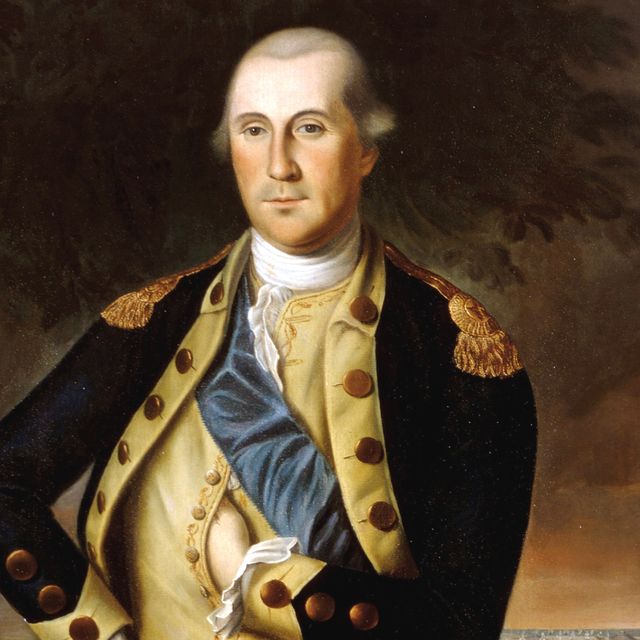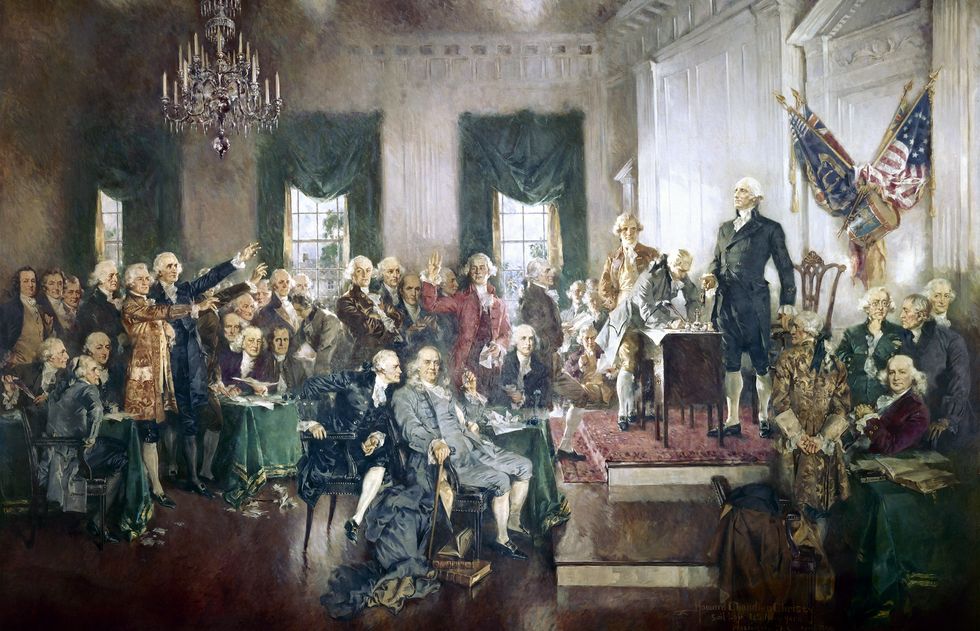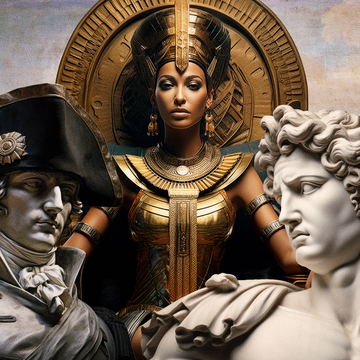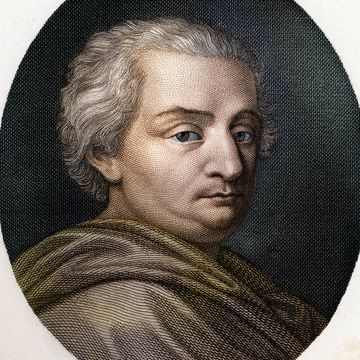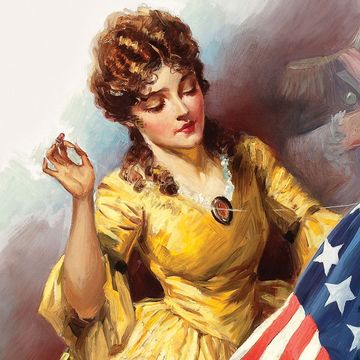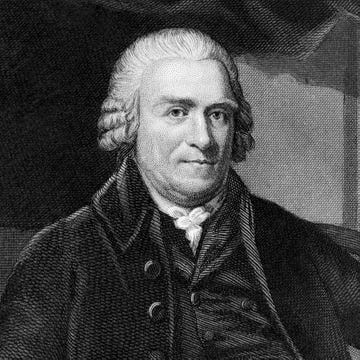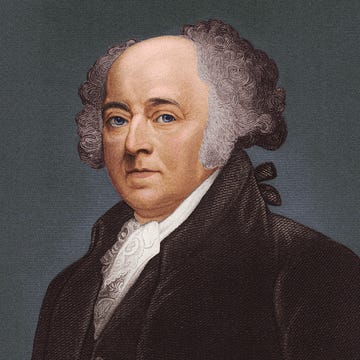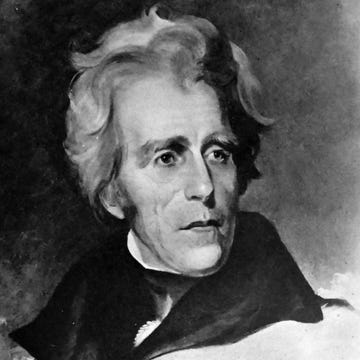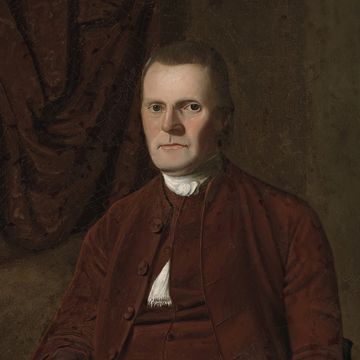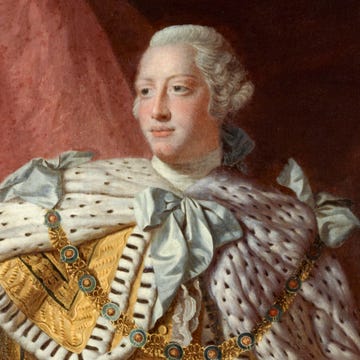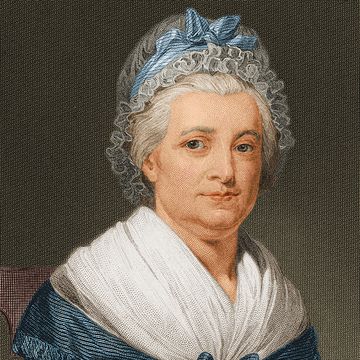On February 4, 1789, 69 representatives from the early American states cast their votes for the first president. Two months later, the results showed that every single one had voted for retired military general George Washington, making him the first (and last) to be elected to the office unanimously.
Although he didn't campaign and didn't want to leave the quiet life of his plantation, Washington was hardly surprised by the news. After all, he was a national hero for engineering the Continental Army's surprising victory in the American Revolution, and he had the full respect and admiration of his fellow statesmen. As Henry Lee later put it, Washington had become "first in war, first in peace, and first in the hearts of his countrymen."
Still, there was a man behind the myth, and it was the combination of his characteristics, some innate and others carefully developed, that made Washington the obvious choice to take charge at this stage of the nascent country's history.
Washington had a strong moral character
While the story of young Washington admitting to felling a cherry tree was invented by a biographer, the fable underscores the degree to which he was held as a person of impeccable character.
Learning to control his ambitions and temper as a young man, he impressed colleagues with an even-keeled demeanor and adherence to strong moral values. Observed Abigail Adams, wife of Washington's vice president, John Adams: "He is polite with dignity, affable without formality, distant without haughtiness, grave without austerity; modest, wise and good."
Washington's lofty reputation was upheld by his actions. He refused to be paid for commanding the Continental Army, only requesting to be reimbursed for expenses, and he resigned his military commission after his popularity surged at the close of the Revolution, putting his allegiance to the republic ahead of a desire for personal gain.
He was easy to talk to
Although he was born into the Virginia gentry, Washington did not travel abroad for the private education that was provided to his older half-brothers. So he was acutely aware of his perceived shortcomings and took pains to mold himself into a dignified gentleman.
This involved the memorization of The Rules of Civility and Decent Behaviour In Company and Conversation, a guide written by Jesuit priests 150 years earlier, as well as the study of the noblemen in his life and acquired proficiency in activities like dancing, fencing and horsemanship.
Washington's mastery of social interaction naturally translated to the political arena. For all his authority, he came across as agreeable in conversation and sought to find areas of common ground. His political skill went a long way toward bridging the quarreling sides at the 1787 Constitutional Convention and ratifying the document now held sacred in American law.
Washington was large in stature and presence
As befitting a military hero, Washington cut a formidable presence. A contemporary in the 1750s described him as "measuring six feet two inches in his stockings and weighing 175 pounds. ... His frame is padded with well-developed muscles, indicating great strength." The admirer also praised Washington's "commanding countenance," as well as his "graceful" and "majestic" movements.
By the time he became president, the 57-year-old Washington was certainly less agile but even more imposing at upward of 200 pounds. By then he had survived an array of life-threatening situations, from contracting smallpox as a teenager and baptism by fire in the battlefields of the French and Indian War to the harsh winter of Valley Forge, rendering him a larger-than-life figure.
He dressed fashionably
Washington learned the value of sharp attire while studying the Virginia nobility he so admired, eventually noting that "nothing adds more to the appearance of a man than dress." This produced his devotion to a suitable wardrobe after establishing himself as a surveyor and a landowner, ordering garments from a London tailor to accommodate his height and long limbs.
Washington also understood the symbolic value of clothing: He arrived in full military uniform at the Second Continental Congress in 1775, signaling that he was ready to battle the British, and insisted that his servicemen also dress in a professional manner. As president, he dismissed the idea of appearing in the garish robes of European monarchs for portraits, preferring to be depicted in conservative American-made suits.
Washington studied hard so he could command with ease
While not regarded in the same vein as Thomas Jefferson, Alexander Hamilton and other heralded scholars of the era, Washington was no slouch in matters of intellect. From his early setbacks as a young officer, he studied military books to improve his understanding of battlefield strategies, gaining insights that shaped his directions during the crucial moments of the American Revolution.
Afterward, he became fully versed in principles of government and formed his own strong convictions as to what the burgeoning democracy should become. As a result, when it came time to move forward with the presidency, Washington was prepared to follow the guidance of his Jefferson-Hamilton cabinet and he was ready to lead with his own sense of direction, as he had done while commanding the charge for independence on the battlefield.
